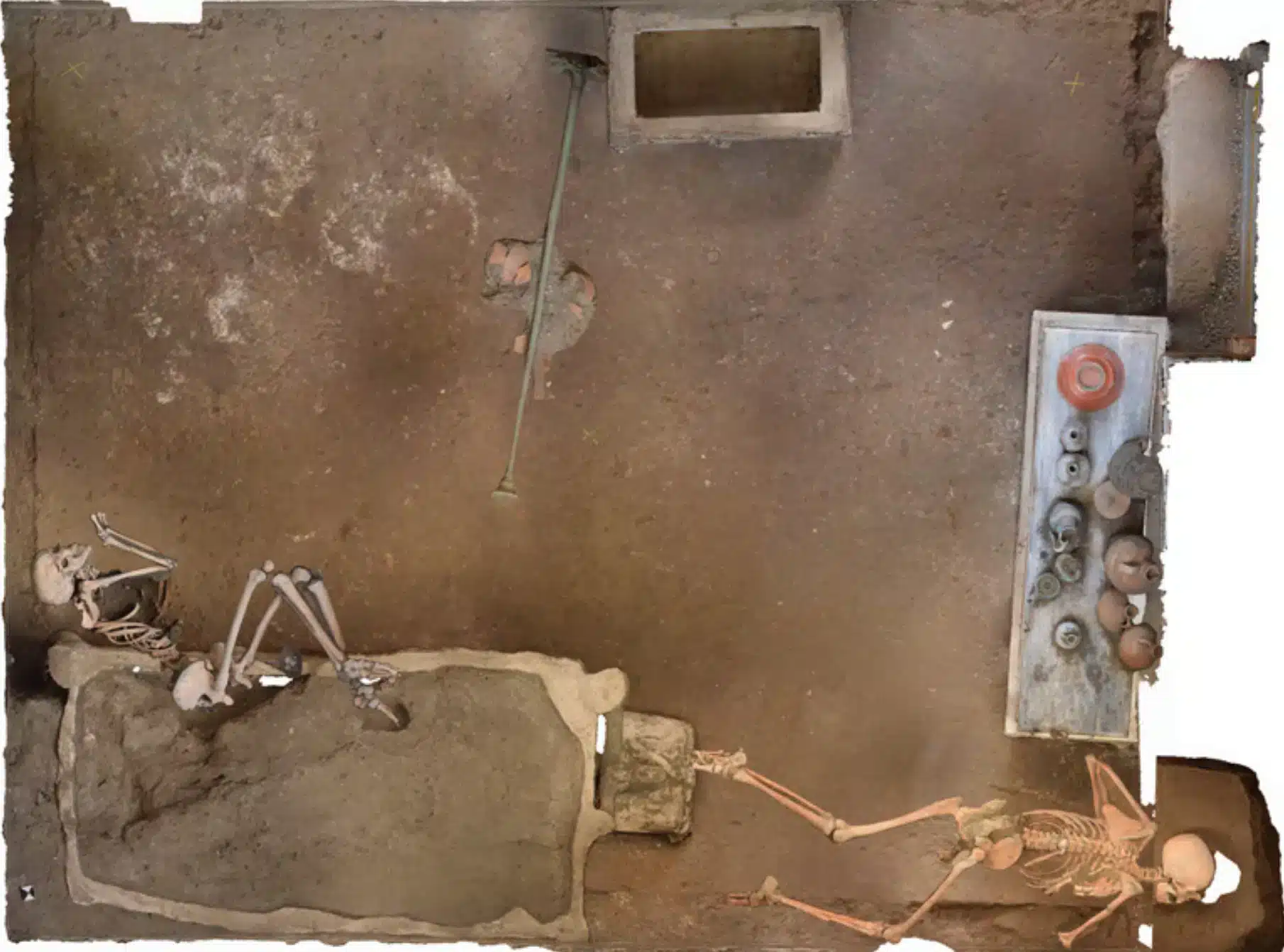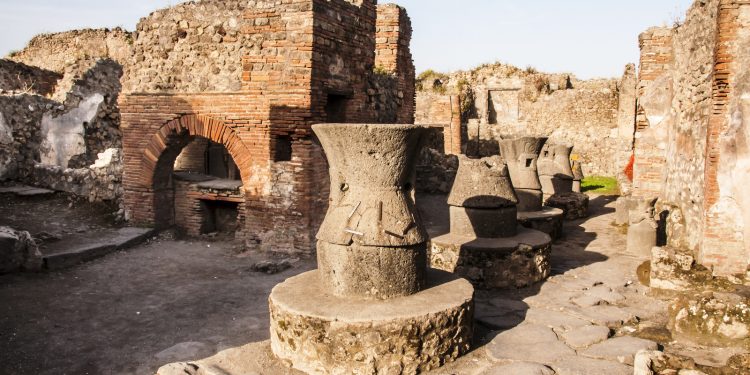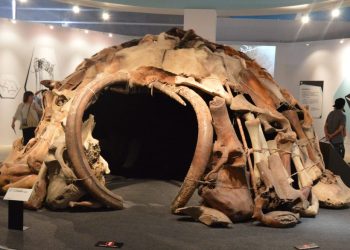Archaeologists have recently uncovered the skeletal remains of two individuals—a man and a woman—who perished during the catastrophic eruption of Mount Vesuvius in 79 CE, as part of ongoing excavations in Pompeii. The remains were found in a small room within a house, measuring approximately 2.8 by 3.5 meters (9 by 11.5 feet). The woman’s skeleton was discovered on what is believed to have been a bed, surrounded by a collection of gold, silver, and bronze coins, as well as jewelry, suggesting an attempt to gather her valuables in her final moments. Among the jewelry were gold and pearl earrings, and a key was found nearby, possibly indicating her efforts to secure her possessions before the eruption overwhelmed the city. Archaeology Magazine reports that this poignant discovery offers a glimpse into the desperation faced by Pompeii’s residents during the disaster.
The man’s remains were found in another corner of the room, close to what appears to have been an exit. He is estimated to have been between 15 and 20 years old. Evidence suggests he was fatally trapped by a collapsing wall, leaving him confined in the small space. Experts believe that the pair sought refuge in this small room, likely a bedroom, as volcanic ash and debris rained down upon the city. The room, separated from the main part of the house, offered some protection from the pumice stones that filled the nearby grand hall.

However, this isolation tragically turned the room into a deadly trap when the hot gases, lava, and ash inundated the city, leaving the victims with no escape route. Gabriel Zuchtriegel, Director of the Pompeii Archaeological Park, reflected on the profound emotional impact of such discoveries, noting that even after two millennia, the anguish and despair of Pompeii’s residents can still be felt. He emphasized that their work is not only about uncovering history but also about understanding the human suffering that took place in Pompeii.
This discovery is part of a broader initiative aimed at protecting and preserving the excavation sites in Pompeii, a historical treasure that has become a prominent tourist destination in Italy. To recover the delicate skeletons and accompanying artifacts, experts employed specialized techniques, including the use of plaster to fill the voids left by decayed organic materials. This process allowed them to recreate the room’s original layout, revealing details such as a bed, chest, chandelier, and a marble-topped table, which still held various utensils made of glass, bronze, and ceramics. These plaster casts provide invaluable insights into the positions of these objects at the time of the eruption, enhancing our understanding of the lives abruptly cut short by the disaster. Pompeii, a vibrant resort town located south of present-day Naples, was home to between 10,000 and 20,000 residents at the time of the eruption. It is estimated that approximately 2,000 of these inhabitants lost their lives within just 20 minutes of the pyroclastic flows striking the city.











![A piece of decorated ivory retrieved from the ruins. [PHOTO/XINHUA]](https://curiosmos.com/wp-content/uploads/2024/12/A-piece-of-decorated-ivory-retrieved-from-the-ruins.-PHOTO-XINHUA-350x250.jpeg)